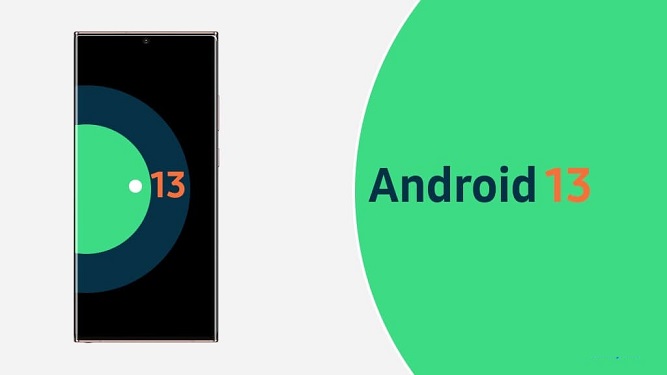Android 13: Everything We know about Google’s next-gen operating system
In this article, we will cover all the features that we already know about Android 13.
Android 12 has just been released for some of the best smartphones globally, and the company is now working on the next big version, Android 13. In February, the first demo of Google’s mobile operating system was released to developers. In addition, it looks like the final, stable version will be available sooner this year than in 2021. Join us to explore what we know about Google’s future operating system.
Name and release date of Android 13

Before Android 10, Google used to name versions of its operating system using dessert or dessert names. Although the number is now commonly used in later versions, it can still be said that the same name is often used in domestic versions. Thanks to the developers’ first demo release in February, we know that the code name for Android 13 is Tiramisu.
The company plans to release an additional preview in March, the first beta in April, and three more betas in May, June, and July. Finally, Google will launch a stable release in August 2022 (August and September 1401). Nevertheless, everything may change by then; Therefore, the accuracy of this information can not be verified.
Android 13 design

One of the most important changes to the user interface of the Android 12 operating system compared to previous years is the material design language of Material You. Google has provided more personalization options, background-color controls based on the background image, and more spectacular animations in this version. In Android 13, we will not see fundamental changes; But Google is still trying to develop new features and design tricks.
Development of color palette in the style of Material you
![]()
Google released the screenshots after the developers’ first demo. The company is developing a compatible Material You color palette beyond its applications to all application icons.
You can apply the system’s colors from your background image to your icons. Developers must provide duplicate versions of their application icons and modify some code. “We are working with our device partners to offer them more devices,” said Burke, Android’s vice president of engineering.
Create a dynamic theme by presenting four different styles
To improve the colors, Google is developing four new palettes that automatically match the color scheme of the entire operating system to the user-selected wallpaper.
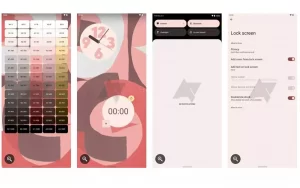
“EXPRESSIVE” seems to be for colors that do not come directly from the background image, while “SPRITZ” chooses more neutral colors on a grayscale. We may see this feature in the upcoming stable version of Android 12L, But this is very unlikely to happen.
Lock screen layout
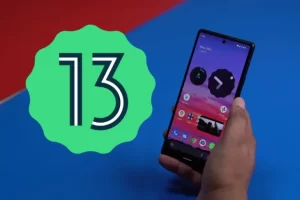
In Android 13, a new layout will be added in the lock screen settings to change how the clock is placed on the lock screen. Now in Android 12, the screen lock clock is displayed in the two lines you see in the image above; But only when there is no announcement. When notifications appear on the screen, it changes to a one-line layout. And when notifications are deleted, it returns to a two-line mode. In addition, this feature will probably be added to Android 12L.
Improving the performance of Android 13
Android 12 introduced several features, including support for scrolling screenshots and One-Handed mode, enhanced auto-rotation, and the AppSearch feature; But in what areas will Android 13 improve?
Easier access to scan QR code
QR codes have become much more important in the Quaid-19 era, and Google seems to be looking for a new solution to make them easier to use in the future. Not to mention that you could already scan QR codes through a similar camera or third-party Android app.
Google is now scanning the built-in QR code in Android 13, which can be operated directly on the lock screen and accessed through the quick settings section. Although little change may be felt in practice; This method provides faster and easier access to the camera. Google QR code scanning has recently been criticized for security flaws; Therefore, it is expected to resolve these issues before publication.
Change account from the lock screen
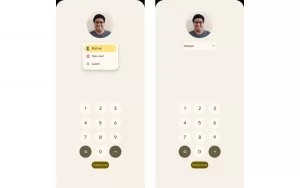
The Android operating system typically supports multiple users, and there are several ways to change users on the device. In Android 13, a new option will probably be added that allows different users to change profiles directly from the lock screen. Android 13 also allows users to install apps when setting up their guest profiles without compromising privacy.
Bluetooth LE Audio support
Blu audio LE stands for Low Energy, a new standard for low-power audio file transfer. Android 12 has the necessary prerequisites for Bluetooth LE Audio, But it is not fully supported. It seems that we will see changes in Android 13; Because the Android Open Source Project (AOSP) on Twitter by Michal Rahman showed that full support for BLE Audio is provided in Android 13.
Google also plans to add an LC3 codec for A2DP Bluetooth. LC3 stands for Low Complexity Communications Codec, a new high-quality, low-power audio code in LE Audio Bluetooth that promises to deliver quality sound even at low data rates.
Transfer Media files
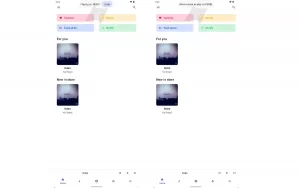
Apple offers Tap to Transfer between iPhones and its smart home’s speaker. When playing music on iPhone, you can easily tap the homepage to transfer the player to the speaker to hear a louder sound. According to a prototype shared by the AndroidPlus website. Google is likely to be working on the same Tap to Transfer or TTT feature in Android 13. More information is not available yet, and it is impossible to confirm this feature’s official release in the future.
Disable touch sound in silent mode
In Android 13, you can disable all touch sounds in silent mode. The satisfying sound is not completely disabled when you now mute your device in the Android operating system for those who do not know. Although disabled for incoming calls and messages; Interactive tools such as gesture navigation, pushing buttons, etc., are not. In Android 13, silent mode disables all sections, and you will experience true silence when using the phone.
New sound output menu design
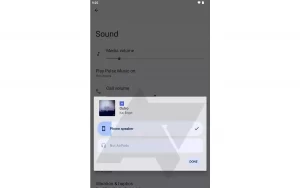
Google is working on a new design of the sound output selector in Android 13. For those who do not know, the audio output selector is a button in the media player’s upper right corner. When you tap it, a menu is displayed with all available devices to direct audio output. This feature was released in Android 10 and redesigned in Android 11. Now it seems that this feature will be changed in Android 13 to better adapt to the design language of Material You.
Ability to choose a different language for each program
Google is working on a new feature called “Panlingual” that allows users to apply the language settings of any application of their choice separately from the entire system’s settings.
This feature will undoubtedly be very useful for multilingual users who want to use certain programs in certain languages. It is said that a new option is located at the bottom of the languages and inputs called App Languages, from where a language can be assigned to a specific application.
Currently, certain apps, such as Google Maps, allow you to change the language inside the app; But controlling any application, even for third-party applications, is a feature that many users worldwide welcome.
Flashlight brightness control
Google plans to add 13 new features to the Android operating system that allow users to control the flashlight’s brightness on their smartphones. Not to mention that Samsung users have been using it for a long time.
Privacy and security updates
Privacy and security are always important to Google. With each new version of Android, the company makes the operating system more secure and private. And the user has more control over the things that matter most; Android 13 is no exception to this rule.
Private photo selector

With a focus on privacy, similar to document selector across the system, Android 13 offers photo selector capabilities across the system; This means that third-party applications will only have access to images that you allow, not your entire gallery. This protects other media files. Google announced that it would also offer this feature through the Google Play service update for Android 11 and above phones.
Location permissions for nearby WiFi devices
If an app needs to locate nearby WiFi devices on Android 12, location access permissions may be enabled. This is not safe. In Android 13, Google introduces the new NEARBY_WIFI_DEVICES license, so apps with this new option do not give unauthorized access to the location, which is also better for privacy.
Running Windows 11 on Android 13
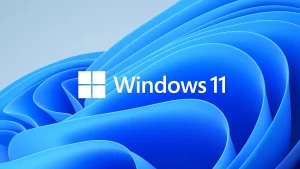
It seems that in the Android 13 update, users can run alternative operating systems such as Windows 11 on their phone using a virtual machine (VM).
Danny Lane, web developer, Android application, has run Windows 11 on the Pixel 6 on a virtual machine. The developer used an Android 13 to run a virtual machine on the Pixel 6. This phone ran the first demo version of Android 13 developers. He even released a video showing that Doom in Windows 11 runs on a virtual machine.
Runtime Permission feature
If you are tired of receiving too many notifications of unused apps on your phone, this feature will help you in Android 13. Now, any app can send you notifications, even for ads, eventually spam.
Android 13 adds new permission for notifications; notifications can become an optional feature in the future operating system when running an application. With these interpretations, users may allow applications to send notifications to their devices. This feature is similar to other permissions, such as access to location and camera when a newly installed application is opened.
Energy-saving mode (TARE)
Google is working on a new feature that manages the device’s power consumption. This feature is known as Android Resource Economy (TARE for short).
The energy-saving mode, related to the percentage of the device’s battery, imposes restrictions on applications based on battery drain. And applications can then benefit from their share of system resource usage.
We’ll have to wait for Google to release official information about TARE to understand better how it works; But apparently, this will be a new way to manage application processing and device energy management in Android 13.
The above is almost all the features we already know about Android 13. Note that this article will be updated with new features and changes.










